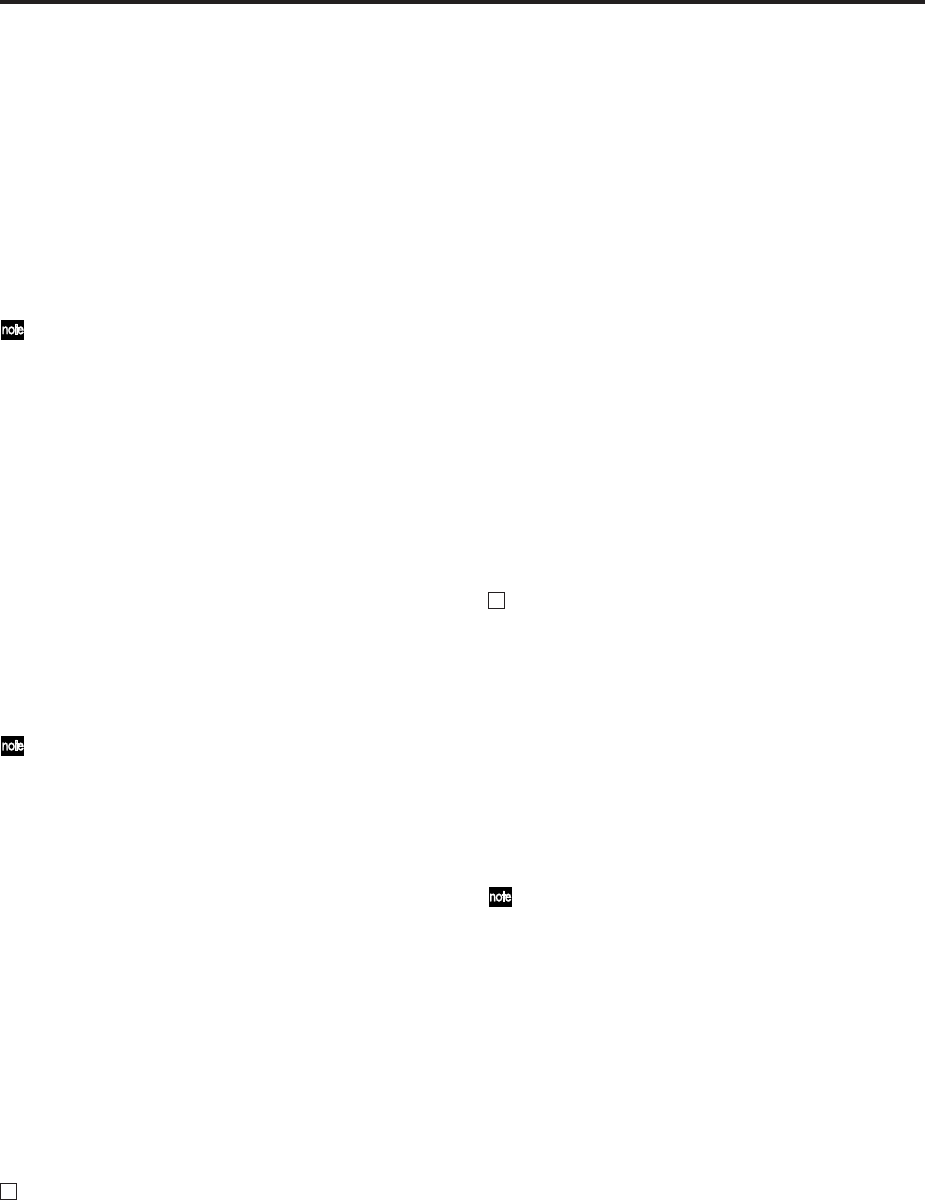
176
Tuning
RPN fine tune [Bn, 65, 00, 64, 01]
This RPN message can be used to adjust the detuning for a
program or timbre (in Combination mode), or for a track (in
Multi mode).
The procedure is as follows.
1 [Bn, 65, 00, 64, 01]: Select RPN parameter 01.
2 [Bn, 06, mm, 26, vv]: Use data entry to set the value. A
value of 8192 [mm, vv=40, 00] is center, 0 [mm, vv=00,
00] is –100 cents, and 16383 [mm, vv=7F, 7F] is +99 cents.
You can use the universal exclusive Fine Tune message
to adjust the overall tuning that corresponds to the
“Master Tune” (GLOBAL 0–1a) parameter. (“About
system exclusive messages”)
Transposing
RPN coarse tune [Bn, 65, 00, 64, 02]
This RPN message can be used to adjust the transposition
for a program or timbre (in Combination mode), or for a
track (in Multi mode).
The procedure is as follows.
1 [Bn, 65, 00, 64, 02]: Select RPN parameter 02.
2 [Bn, 06, mm, 26, vv]: Use data entry to set the value.
Normally only the upper byte is used.
A value of 8192 [mm, vv=40, 00] is center, 6656 [mm, vv=34,
00] is –12 semitones, and 9728 [mm, vv=4C, 00] is +12 semi-
tones.
You can use the universal exclusive Coarse Tune mes-
sage to adjust the overall tuning that corresponds to the
“Key Transpose” (GLOBAL 0–1a) parameter. (“About
system exclusive messages”)
Changing the pitch bend range
RPN pitch bend range [Bn, 64, 00, 65, 00]
This RPN message can be used to adjust the pitch bend
range for a program or timbre (in Combination mode) or for
a track (in Multi mode).
The procedure is as follows.
1 [Bn, 65, 00, 64, 00]: Select RPN parameter 00.
2 [Bn, 06, mm, 26, vv]: Use data entry to set the value.
Normally only the upper byte is used.
A value of 0 [mm, vv=00, 00] is +00, and a value of 1536
[mm, vv=0C, 00] is +12 (one octave). Although it is possible
to set a negative value for a timbre/track, only positive val-
ues can be set using RPN messages.
Controlling the arpeggiator (NPRN)
Arpeggiator operations can be controlled using NRPN (Non
Registered Parameter Number) messages. NRPN messages
can be freely used in non-compatible ways by different man-
ufacturers and models of instrument.
The procedure for using NRPN messages is the same as for
RPN, but you will use NRPN MSB (CC#99) [Bn, 63, mm]
and NRPN LSB (CC#98) [Bn, 62, rr] messages (n: channel,
mm, rr: upper and lower bytes of the parameter number) to
specify the parameter.
NRPN arpeggiator on/off
[Bn, 63, 00, Bn, 62, 02, Bn, 06, mm]
This message will be transmitted when you press the [ARP
ON/OFF] button. When the switch is turned ON the data
will be mm=127 [7F], and when turned OFF the data will be
mm=0 [00], and the arpeggiator will be turned on/off
accordingly.
Similarly, the arpeggiator will be turned on/off when this
message is received. (ON when mm is 64 [40] or greater, and
OFF when 63 [3F] or less.)
NRPN arpeggiator gate control
[Bn, 63, 00, Bn, 62, 0A, Bn, 06, mm]
This message will be transmitted when you operate the
[ARP-GATE] knob (REALTIME CONTROLS [2] knob in C-
mode), and the arpeggiator gate will change. The same
effect will be applied when this message is received.
NRPN arpeggiator velocity control
[Bn, 63, 00, Bn, 62, 0B, Bn, 06, mm]
This message will be transmitted when you operate the
[ARP-VELOCITY] knob (REALTIME CONTROLS [3] knob
in C-mode), and the arpeggiator velocity will change. The
same effect will be applied when this message is received.
About system exclusive messages
Since the way in which these messages are used is left up to
each manufacturer, they are mainly used to transmit and
receive sound data and editing data for parameters that are
unique to a particular instrument. the X50/microX’s system
exclusive message format is [F0, 42, 3n, 63, ff, ..... F7]
F0: exclusive status
42: Korg ID
3n: [n=0–F] global MIDI channel 1–16
7A: Future model ID
ff: function ID (type of message)
– ...
F7: end of exclusive
To obtain a copy of the “MIDI Implementation” which
includes MIDI exclusive format information, please
contact your Korg distributor.
Universal system exclusive
Certain of the system exclusive messages are publicly
defined for a specific use, and these are called universal sys-
tem exclusive messages.
The X50/microX uses the following six universal system
exclusive messages.
Inquiry message request [F0, 7E, nn, 06, 01, F7]
Inquiry message [F0, 7E, nn, 06, 02, (nine bytes), F7]
When an inquiry message request is received, this instrument
will respond by transmitting an inquiry message that means
“I am a Korg Future instrument, with system version ...”
GM system on [F0, 7E, nn, 09, 01, F7]
When this message is received in Multi mode, this instru-
ment will be initialized for GM playback.
Master volume [F0, 7F, nn, 04, 01, vv, mm, F7]
(vv: lower byte of the value, mm: upper byte of the value,
together indicating 16384 steps)
This message is transmitted if you assign Master Volume as
the function of the ASSIGNABLE PEDAL or as a B-mode
function of a REALTIME CONTROLS [1]–[4] knob and
operate the controller. This will adjust the overall volume


















